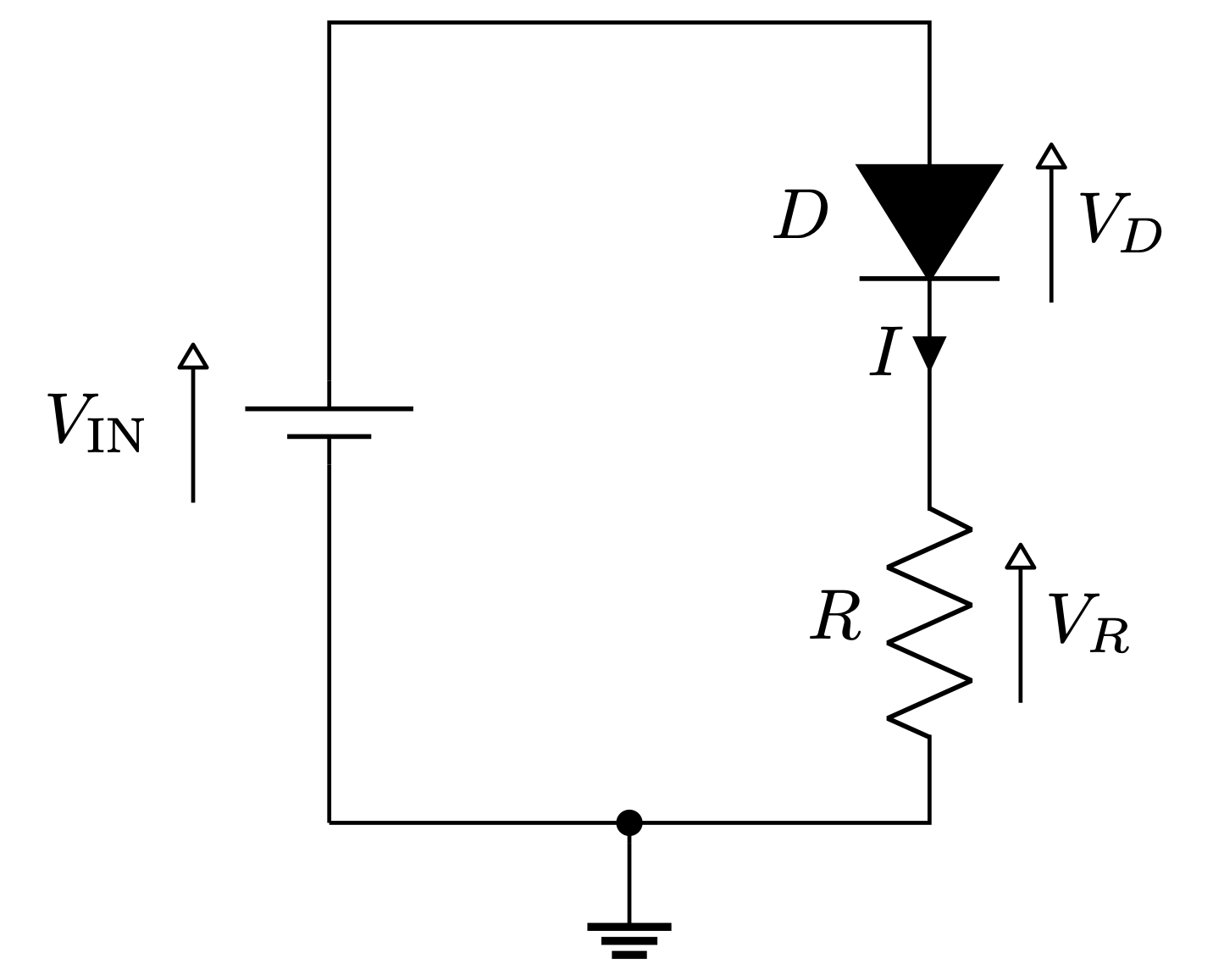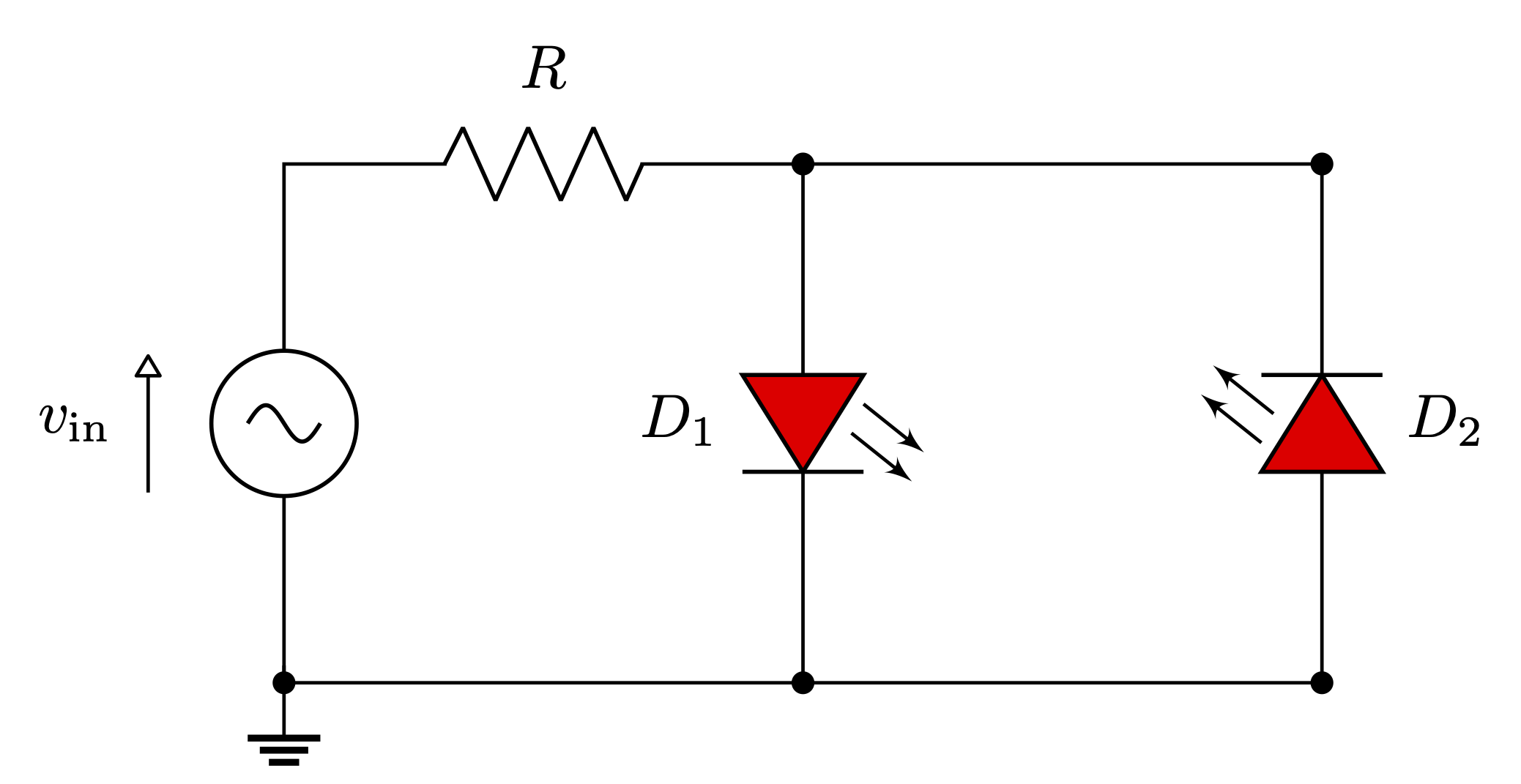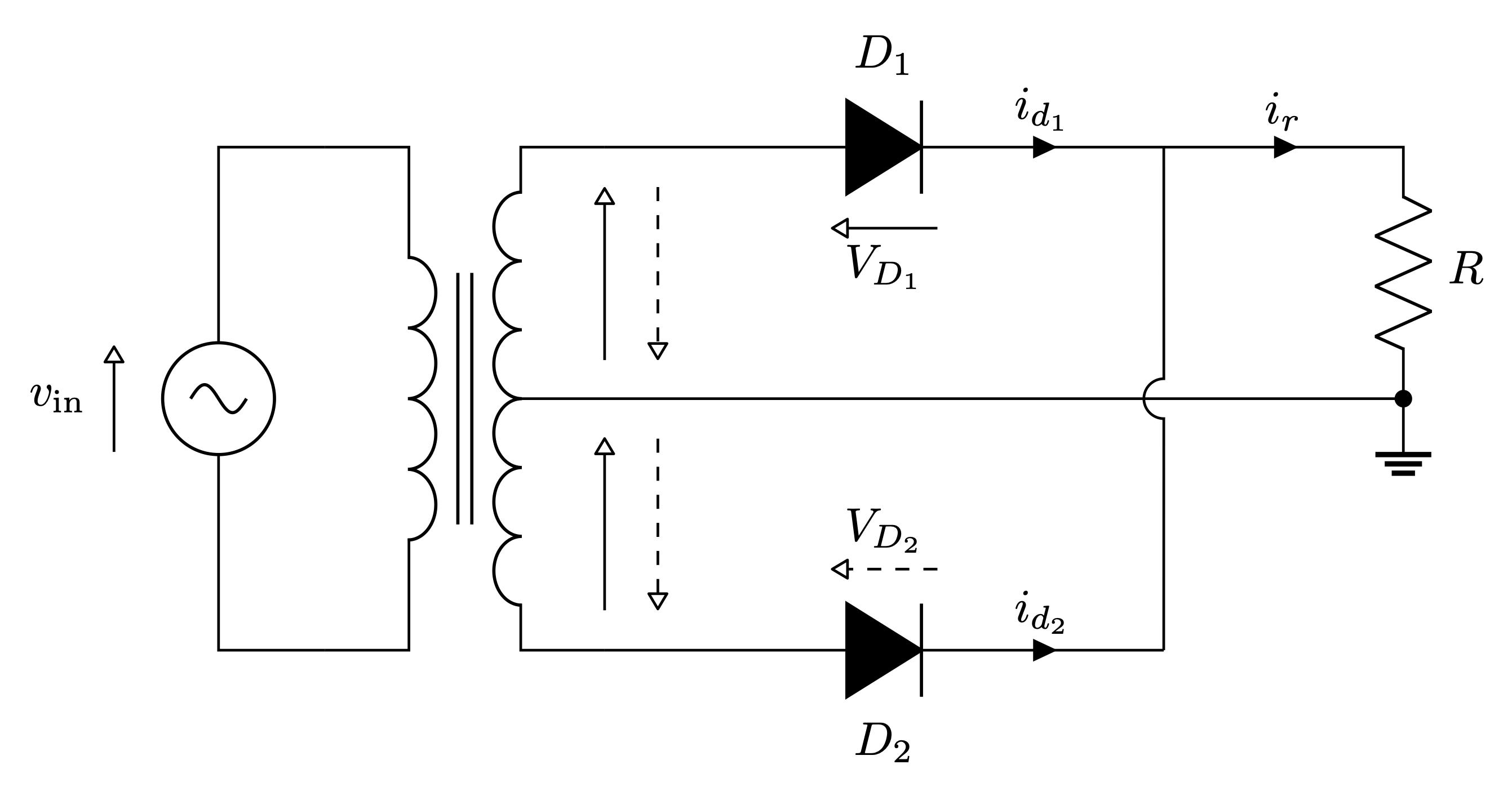\documentclass[border=3pt]{standalone}
% Circuits
\usepackage[european,s traightvoltages, RPvoltages, americanresistor, americaninductors]{circuitikz}
\tikzset{every picture/.style={line width=0.2mm}}
% Notation
\usepackage{amsmath}
% Tikz Library
\usetikzlibrary{calc}
% Bipoles Specifications
\ctikzset{bipoles/thickness=1.2, label distance=1mm, voltage shift = 1}
% Arrows Above Compenents
% Source: https://tex.stackexchange.com/questions/574576/circuitikz-straight-voltage-arrows-with-fixed-length
\newcommand{\fixedvlen}[3][0.4cm]{% [semilength]{node}{label}
% get the center of the standard arrow
\coordinate (#2-Vcenter) at ($(#2-Vfrom)!0.5!(#2-Vto)$);
% draw an arrow of a fixed size around that center and on the same line
\draw[-{Triangle[round,open]}] ($(#2-Vcenter)!#1!(#2-Vfrom)$) -- ($(#2-Vcenter)!#1!(#2-Vto)$);
% position the label as it where if standard voltages were used
\node[ anchor=\ctikzgetanchor{#2}{Vlab}] at (#2-Vlab) {#3};
}
\newcommand{\fixedvlendashed}[3][0.75cm]{% [semilength]{node}{label}
% get the center of the standard arrow
\coordinate (#2-Vcenter) at ($(#2-Vfrom)!0.5!(#2-Vto)$);
% draw an arrow of a fixed size around that center and on the same line
\draw[dashed,-{Triangle[round,open]}] ($(#2-Vcenter)!#1!(#2-Vfrom)$) -- ($(#2-Vcenter)!#1!(#2-Vto)$);
% position the label as it where if standard voltages were used
\node[ anchor=\ctikzgetanchor{#2}{Vlab}] at (#2-Vlab) {#3};
}
\begin{document}
\begin{circuitikz}
% %Grid
% \def\length{6}
% \draw[thin, dotted] (-\length,-\length) grid (\length,\length);
% \foreach \i in {1,...,\length}




